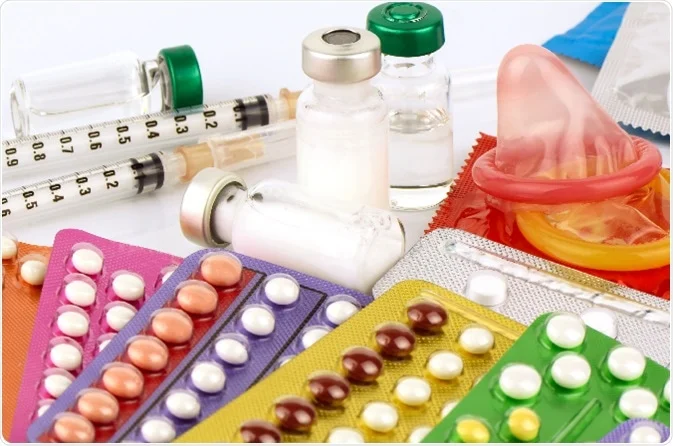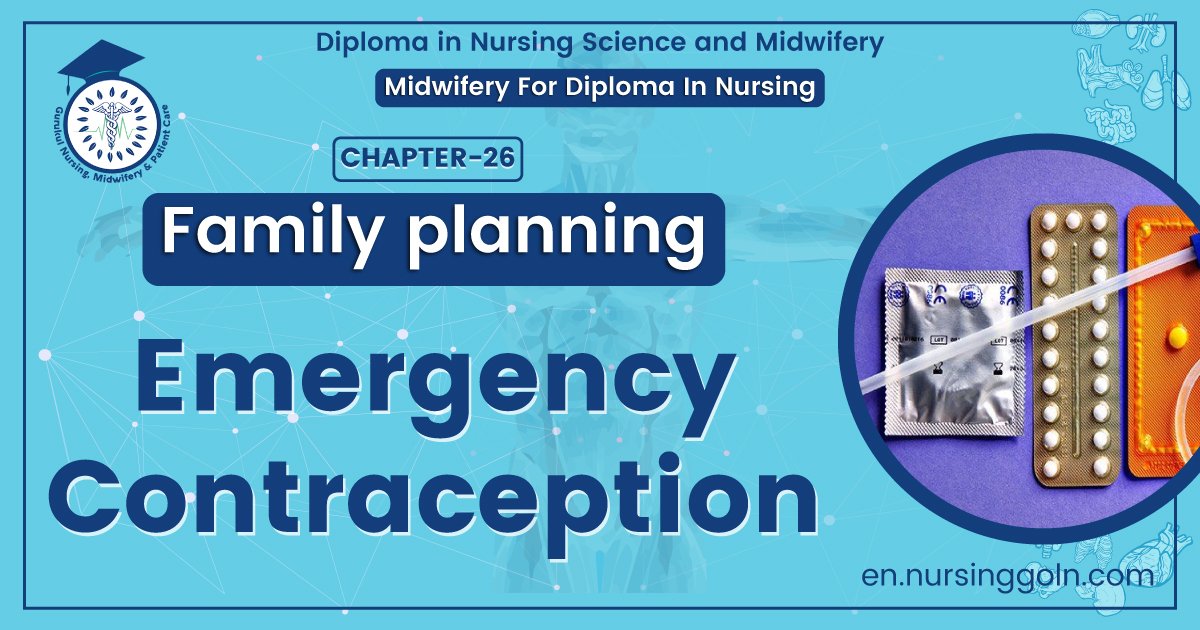Emergency contraception & Safe period – This course is designed to understand the care of pregnant women and newborn: antenatal, intra-natal and postnatal; breast feeding, family planning, newborn care and ethical issues, The aim of the course is to acquire knowledge and develop competencies regarding midwifery, complicated labour and newborn care including family planning.
Emergency contraception & Safe period
Emergency contraception:
A. It is defined as any drug or device used after unprotected intercourse to prevent pregnancy
B. Occasionally a couple may have unprotected coitus, or there may be a problem with the contraceptive
C. Method used eg. Condom rupture, displace IUCD or irregular hormonal contraception and emergency contraception may be required
D. However, these methods should not become a substitute for a regular contraceptive method. Emergency contraception may also be required in a case of rape
E. There are 2 types of emergency contraception in general usage
a) Hormonal:
- Levonorgesterel (E. pills) -0.75 mg, 2 doses given at 12 hours interval
- Ethinyloestradiol 50 micro gram + norgesterol 0.25 micro gram: 2 tab stat and 2 tab after 12 hours
- Conjugated oestrogen: 15 mg 12 hourly for 5 days
- Mifepristone: 100 mg single dosenal
b) A copper bearing IUCD (Cu-T) within 5 dose

Safe period
Safe Period / Rhythm Method / Calendar Method:
It is that period of menstrual cycle during which there is least chance of fertilization in spite of frequent coitus due to absence of ovum.
or
It is the sterile period in each menstrual cycle during which conception does not occur.
Calculation of Safe Period
A. In a regular menstrual cycle (28 days):
- 28-18 10th day is the 1st day of the fertile period (1st unsafe day)
- 28-10-18th day is the last day of the fertile period (last unsafe day)
So the total unsafe days are from 10th to 18th day of the menstrual cycle e = 9 days only. All other days before and after the unsafe days are the safe period
B. In an irregular menstrual cycle (26 to 31 days):
- 26-18-8th days is the 1st day of the fertile period (1st unsafe day)
- 31-10=21st day is the last day of the fertile period (last unsafe day). So the total unsafe days are from 8th to
21st day of the menstrual cycle = 14 days. All other days before and after the unsafe days are the safe period.

Safe Period is the Based on the Following Facts:
1. Only ovum is discharge in each cycle which survives for 24-48 hours.
2. Spermatozoa survive 48-72 hours after ejaculation
3. Ovulation usually take place on the 14th days prior to the onset of next menstruation with a ± 2 days variation on either side i.e. ovulation occurs from 12th to 16th days prior to the onset of menstruation.
4. For above reasons there are only 3 days for conception in each menstrual cycle. If the sexual intercourse is restricted for these 3 days conception will not occur. The beginning of the fertile period can be estimated by subtracting18 days (16 days + 2 days sperm survival) from the shortest cycle. The end of the fertile period can be estimated by subtracting 10 days (12 days-2 days ovum survival) from the length of the longest cycle.
Safe Period is Not 100% Safe Because:
1. A woman’s menstrual cycles are not always regular if the cycles are irregular it is different to predict the safe period.
2. There may be wrong calculations inability to follow calculations irregular use and taking chances
3. Spermatozoa can live up to 7 days in exceptional couples.

Read More…
